let the objects speak
West Mexico - Ballplayer Figure
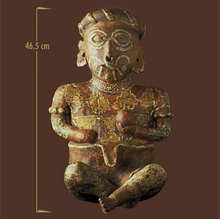
In Nayarit, ceramic figures were typically made in naturalistic poses portraying a wide range of daily activities from all societal classes, and this seated ballplayer is no exception. The figure is identified as a player by the ball he holds, his headgear, and the yoke or belt he wears to protect his hips from the solid rubber ball used to play the game. The detailed pattern on the garment he wears may indicate his lineage, religion, or political allegiance. Adornments such as ear flares, nose ring, arm bands, and body paint indicate status, and are instrumental to our understanding of the ritual importance of the ballgame.
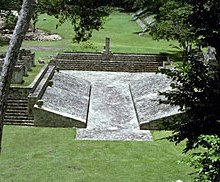
Ballcourts are found throughout Mesoamerica. The ballgame probably originated in the first millennium B.C., perhaps in the Valley of Mexico, and everywhere it was seen not as sport but as a means of predicting or controlling the future. Although the rules and the courts varied greatly from place to place, the game was always played in a sacred space, and players were usually noble men and/or warriors who were highly respected and well trained. In some cultures players dedicated themselves entirely to practicing the game and preparing for matches, but in others war captives were forced to play the game. Some groups sacrificed the losing team, and in some places all of the possessions of onlookers were the prizes for the team that emerged victorious.
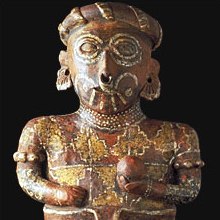
Who
The cultures of Colima and Jalisco bordered those of Nayarit in ancient times. A generally similar style of ceramic figures existed throughout the area, with subjects that besides dogs and other animals included single human beings and couples engaged in daily activities, as well as acrobats, dancers, religious practitioners, ballplayers, and warriors.
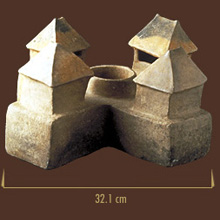
This artifact, one of a small group of architectural models from the West Coast, depicts a house in Jalisco of about 100 B.C. - A.D. 250. Excavation in Jalisco has revealed precincts in which structures are grouped in a fashion similar to that of the model. Arrangements of this sort, centred on what may be a cistern or well, probably served an extended family or other kin group, perhaps of the ruling elite.
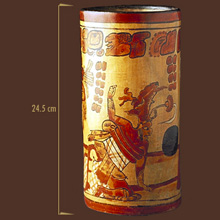
What
The Nayarit figure and this Maya polychrome vessel illustrate the ancient ballgame and bespeak the importance of the ritual game in Mesoamerica, where some version was played by almost all of the ancient peoples.
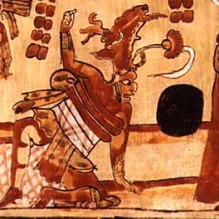
The vessel probably comes from Guatemala in the southern Maya Lowlands. Its painted scene provides information on the equipment required for the game, including leg protection, the padded white waist yoke, and perhaps the unusual upper-body costume. We can assume that the attire is exaggerated here or an example of pre-game ceremonial garb, for he could scarcely have controlled the black rubber ball in front of him effectively while dressed in an elaborate headdress and a long skirt.
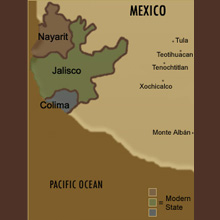
Where
The ancient people of the Mexican state of Nayarit occupied an important part of Mexico's Pacific Coast, a region of great cultural diversity. Sadly, the Prehispanic people of the area are not known by name, but some believe that the modern Huichol, who live in the mountains of northern Nayarit and Jalisco, are among their descendants.

Although a number of habitation sites have been excavated in Nayarit, information on the contents of the area's distinctive shaft tombs is derived almost entirely from looted artifacts. Some Olmec features are detectable in a few areas of the West Coast, but both the region's art and its unusual adobe-block architecture appear to have developed without major influence from neighbouring cultures.